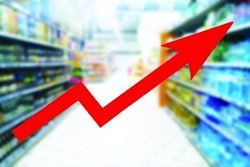
In early December 2023, Vobra Special Petfoods, a Netherlands-based maker of premium and other dog and cat foods, made what seemed like a bold announcement: Effective the beginning of the month, it was reducing the prices of its products. Acknowledging previous price increases driven by the higher raw material and energy costs it had incurred, the company said it was now following through on a commitment to review and lower prices as its costs decreased.
Perhaps other pet food companies are also reducing prices of their products and just not promoting those actions, but as far as I know, Vobra stands as an outlier. Pet food price reductions seem especially rare in the U.S. market now. “We have seen no impetus from brands to roll back price increases that would provide the category some relief,” stated Bryan Jaffe, COO and managing director, and John Gulvezan, vice president, of Cascadia Capital, in their recently released “Fall 2023 Pet Industry Overview” report.
The latest U.S. pet food inflation data, for November 2023, show a lower year-over-year (YOY) increase for pet food prices; it stands at 5.6%, down from 6.5% YOY in October and significantly down from previous highs of 15% or more. Yet compared to November 2019, before the pandemic and this current inflationary period, U.S. pet owners are paying 22.93% more. (This data is courtesy of John Gibbons of PetBusinessProfessor.com.) Will they get any relief in 2024?
Leading indicator: Pet food producer costs
The answer to that question lies in whether pet food producer prices also continue to fall. I haven’t seen the U.S. pet food producer price index (PPI) data for November 2023; as of October, it was stuck at about 8%. And, as with retail prices, producer costs are still much higher than pre-pandemic, up nearly 29% over October 2019. (In their report, Jaffe and Gulvezan compared prices of pet food inputs from December 2017 to present, showing large increases like 34.5% for meat processed from carcasses, a whopping 75.9% for rendered and meat by-products and 30.4% for transportation and warehousing.)
As the analysts said, producer prices are leading indicators to retail prices, so with most pet food companies still trying to manage higher (and often fluctuating) costs, it’s difficult to say more should be following Vobra’s lead in lowering prices on their products.
However, this pricing situation likely has short- and long-term implications for the pet food market’s continued growth. In the past couple of years, growth has stemmed almost entirely from higher retail prices, rather than increases in volume sold, and most pet owners are probably at their limit — or beyond — for how much more they are able or willing to pay for pet food. “Companies are unlikely to be successful pushing price increases in 2024 and will be pressured to reduce prices by both retailers and consumers,” cautioned Jaffe and Gulvezan. “Absent input cost deflation, margin pressure will cut into innovation and discretionary marketing spend, which are key drivers of growth.”
Feeling good about spending on pet food
At least prices are not continuing to increase and, in fact, are slowly declining. Besides the lower YOY rise for pet food inflation in November 2023, the YOY figure for food at home in the U.S. (essentially groceries) was down to 1.7%, and the overall U.S. consumer price index (CPI) YOY was down to 3.1%. The comparison to November 2019 prices is still not pretty — 25.4% for food and 19.4% for the CPI — but ongoing decreases are definitely better than increases.
Perhaps if the PPI starts to come down, too, more pet food companies will see a benefit to adopting Vobra’s approach. Profit margins are certainly important, but so are pet owners still being able to afford their pets’ food and feeling good about what they’re spending.


















